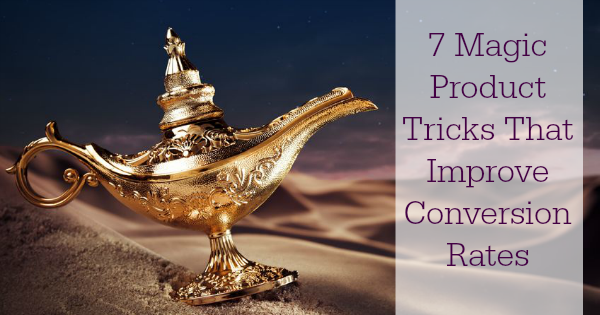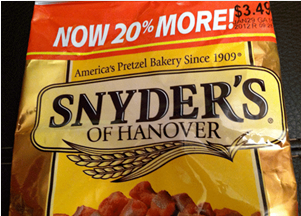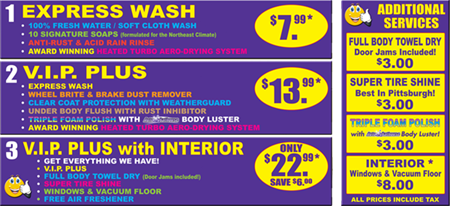
What may be the biggest obstacle to a person buying anything is the pain they experience during the consideration phase of the buying process. If the perceived pain of purchasing is smaller than the perceived reward of purchasing, the purchase will be made. If it’s the opposite, the purchase will not be made. But the key word here is “perceived.”
In my childhood, gas prices hovered in the $1 – 2 range in the U.S. As we all know, that is no longer the case. For the most part, it now hovers in the $3 – 4 range. When gas first hit $3, people felt the pain. Some altered their vacation plans. Some visited distant family less. We cursed under our breath as big oil companies reported record revenue quarters.
Now that people’s minds and budgets have been adjusted over time, what would happen tomorrow if gas went down to $2/gallon? Elation in the streets. The context of the price of the product changed. Therefore, it changed the perception of the cost/reward comparison and the feelings associated with that comparison. When the context of purchasing decisions change, thoughts and feelings change.
You know the following examples well, don’t you? First, you feel proud of yourself for earning a bonus from work. Then, you think to yourself, “I deserve to splurge a little on myself.” The money being deposited into your bank account is no different than the money in your regular paycheck. It all spends or saves the same. But, the context in which you received the money changed. It came as a “bonus.” Therefore, your thoughts and feelings about the money changed. It’s not OK to splurge with your regular paycheck, but it’s OK with a bonus.
Or, first you feel depressed while in the middle of a mid-life crisis. Then, you think to yourself, “I’m going to buy this. After all, I only live once.”
Or, one of my favorites, you feel satisfied that you’ve earned a vacation. Then, you think to yourself, “I only do this once a year and we’re probably never coming back here again.”
When thoughts and feelings change, subsequent behavior changes. When the I deserve to splurge/I only live once/I’m never coming back thoughts and feelings take over, purchasing rates go way up.
When people make their way to your website, they’re already interested in what you’re offering. That’s how they ended up there. But when it’s time to make a decision to part with their dead presidents, context has a lot to do with whether the sale takes place or not.
Some parts of the user’s context you can’t control; like whether or not people are in the middle of a mid-life crisis. But there are some things you can control, like how easy your website is to use and the context in which you present your products and services. In this post, I’m going to focus on product presentation. I’ll give you seven tricks, that when used appropriately and creatively, can help change the context in which your offers are presented. Doing this will then help to influence the subsequent feelings, thoughts and behaviors you’d like your site users to experience.
1. Anchoring
This trick works by establishing an expected fair price for your offer in the mind of the user, and then presenting a much better price for the same offer. The gasoline price scenario above is a perfect example of this. As of today, your price anchor for gas is in the low $3 range. If a gas station had a price of $2.50 tomorrow, the lines would be out to the streets with people filling up gas cans to store in their garages.
Of course, the classic example is infomercials. They always start with an “expected retail price,” and by the end they’re giving you a price that is far below what’s “expected.” They set an anchor for the offer in the viewer’s mind and then blow them away by asking way less.
Be careful about where you set an anchor. You only want to come down in price. You never want to have to go up! Then, you’re reverse-anchoring and killing your sales.
2. Decoying
This trick works by offering customers a similar product that’s clearly inferior, but at or about the same price as the product you’d like to sell. Really, you have no interest in selling the inferior product, although you won’t turn anyone away! What you’re doing here is using context to make one of your products or services seem more valuable than it would be if presented by itself.
 Ever see a bag of pretzels or chips that has “20% More!!!” for the same price as the regular bag? Do you ever take the smaller bag? Nope. They knew that. The smaller bags aren’t there for you to purchase them. They’re there to make you more excited about purchasing the bigger bag.
Ever see a bag of pretzels or chips that has “20% More!!!” for the same price as the regular bag? Do you ever take the smaller bag? Nope. They knew that. The smaller bags aren’t there for you to purchase them. They’re there to make you more excited about purchasing the bigger bag.
The context that you’ve established here is relativity. The big bag is a relatively better deal than the small bag. If either bag were by itself, our brains would have a harder time judging the fairness of the deal. But since they’re together, we can make a comparison. More for the same price? I’m in!
The key to using this trick is that there must be two similar offers present at the same time where one is clearly better than the other (the one you’d like to sell).
3. Bundling
This trick works by giving one price tag to a bundle of seemingly separate items. This provides a context where the customer can’t assign values to each item separately, thereby disabling the ability to analyze the fairness of each item’s offer separately. Even if the bundle price is exactly the same as the a la carte price, the buying pain is minimized, making it more likely the purchase will occur.
We see this all the time with utilities like cable and satellite dish providers. TV, phone and Internet for as low as $99/mo. I think to myself, “that’s not a bad deal.” But, if I saw this; TV = $33, phone = $33 and Internet = $33. I think to myself, “I’m not paying $33 for home phone service that I never use!”
Paying the $99 for all three at once just isn’t as painful as knowing I’m paying $33 for my home phone line.
4. Framing
This trick works by presenting premium-priced products alongside lower-priced products. To the human mind, the premium-priced product makes the lower-priced product hurt less. After all, if people are willing to pay the premium price (as is being communicated by the business offering the product at a premium price), it must be very reasonable to purchase the regular stripped-down version, right?
 This works really well when there are at least three price levels. When there are only two, people can only decide between the cheap and the expensive version. The results tend to be split a bit more. But when there are three options, the middle option becomes more attractive as a compromise between being cheap and overpaying. With this car wash menu, notice how both #2 and #3 have six bullet points? Notice how #2 has way more text, giving off the impression that you’re getting more? Plus, you can still be a VIP! Classic example.
This works really well when there are at least three price levels. When there are only two, people can only decide between the cheap and the expensive version. The results tend to be split a bit more. But when there are three options, the middle option becomes more attractive as a compromise between being cheap and overpaying. With this car wash menu, notice how both #2 and #3 have six bullet points? Notice how #2 has way more text, giving off the impression that you’re getting more? Plus, you can still be a VIP! Classic example.
Therefore, if you have a higher-priced product that sells pretty well, you may be able to increase its sales even more by adding an even higher-priced option to the mix. Of course, you’re not doing this to actually sell a lot of the new product. You’re doing it to sell more of the middle product.
You know the surf & turf that you see on some higher-end restaurant menus? Yes, they sell some of those. But the profits they make from having it on the menu don’t stop at the sales of that particular meal. That meal frames the rest of the prices on the menu so that someone is more likely to buy a reasonably cheaper steak as a compromise, rather than settle for a cheap burger.
5. Priming
This trick works by presenting customers with cues that can affect their behavior. It’s known that if you present images that have to do with money, people tend to get into a more selfish frame of mind. As this LiveScience.com article states, “In a series of nine experiments, researchers found that money enhanced people’s motivation to achieve their own goals and degraded their behavior toward others. The concept of money, they suggest, makes a person feel more self-sufficient and thus more apt to stand alone…when real or fake money, or even a photo of cash, was placed in sight of participants, they became selfish.”
If you present images that trigger good family memories, the opposite effect tends to occur. Therefore, you have to be careful what types of stories and imagery you use on your site to communicate benefits.
If you are selling gifts or asking for donations, you don’t want money to be on your customers’ minds. If you’re selling vacations, it may be just the opposite.
6. Precision Pricing
This trick works by using odd-numbered prices to create a perception that the worth of the product is closer to its actual price. You’re constantly bombarded with this. Sometimes you see prices that are round numbers. One of my local car washes has options at $4, $6 and $8. But, they’re already using decoying and framing by offering you a $4 wash that includes almost nothing and a $8 wash that comes with a super duper awesome amazing bulletproof coating rinse.
Typically, something that costs $6 as a stand-alone option will be $5.99, right? Now you might think the reason for this is because people perceive prices that are just below the next dollar increment to be a better value. But you’d be wrong. People really don’t think $5.99 is a substantially lower price. They know the product costs six bucks. But what they do think is that the precise pricing communicates that the product’s value is closer to the price that it’s being sold at than when it’s priced with a round number. That’s right. Putting a precise number on products gives off a stronger perception that they’re actually worth the price.
This is where we pause to once again remember that context contributes to the level of pain the buyer experiences. With this trick, the precise pricing communicates to the buyer that someone didn’t just slap a round price on the product that may or may not be what it’s worth. It communicates that the price was carefully thought out, creating a belief that it’s closer to the products value. This perception helps to decrease the pain felt by the customer.
7. Limiting
This trick works by limiting the number of products available for purchase to an optimal number that eliminates any chance of buying fatigue. Roger Dooley explains in the book Brainfluence, “…research shows that making choices tires the chooser’s brain and can actually make subsequent decision making more difficult.” When customers have too many choices, they often get confused and frustrated to the point they find it easier to just not choose. In order to find your sweet spot, you have to test.
I see this on restaurant menus all the time. Some restaurants carry what seems like a thousand dishes. They’ve got ten choices each for burgers, steaks, salads, ribs, pasta, chicken dishes, appetizers, desserts… OMG. Sometimes I just throw the menu down and ask the server what they like.
What’s nice about the web is that we can build functionality that helps users limit their selections themselves. Of course that only works nicely if you actually build in the functionality. I’ve seen many ecommerce sites with millions of products that will put 15 or 20 best sellers on their homepage. They think that more choices equal better selection, equal happier shoppers. That’s not the case.
Typically, this problem occurs when a business offers choices that are too similar. Maybe they sell baseball caps. Instead of having five really good choices for each team, they have 45 choices for each team because they feel like having the largest selection will make them stand out. The customer wants a nice NY Yankees cap. Giving them 45 options will give them analysis paralysis.
Conclusion
In this post, I’ve used the label “tricks.” Let me be clear that I used it to mean “methods” and not “deceptions.” Personally, I don’t believe the goal here should ever be to dupe people into purchasing things they don’t want or need. It’s not good business to have unsatisfied customers that regret their purchases. But, it is good business to help customers fulfill their wants and needs by reducing their pain before purchase. These tricks help to do just that.Then if you’re product or service is priced fairly and they have a good experience, your tricks will be their treat.

2 Responses to 7 Magic Product Tricks That Improve Website Conversion Rates